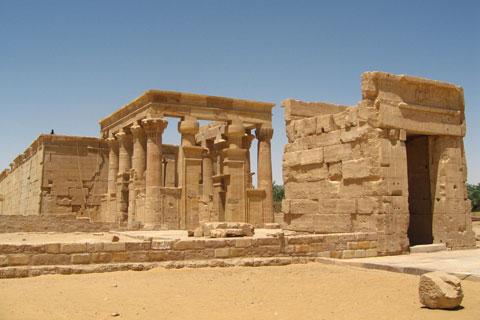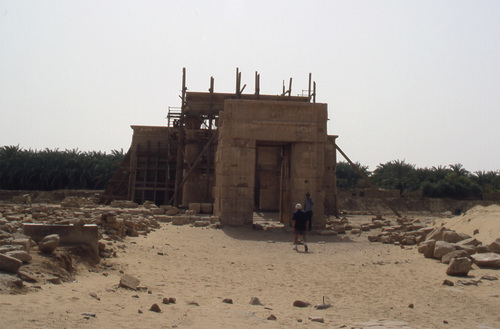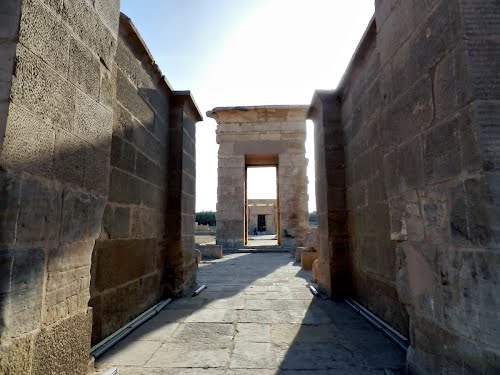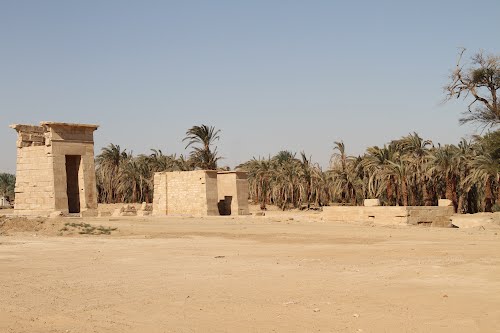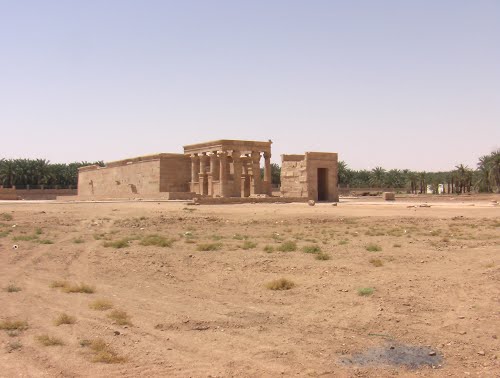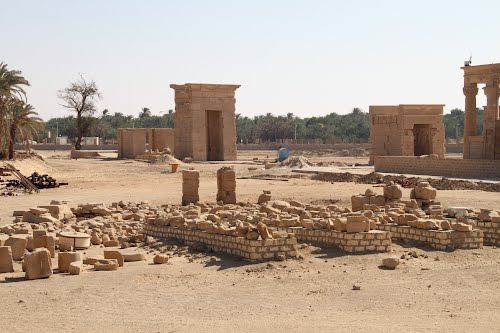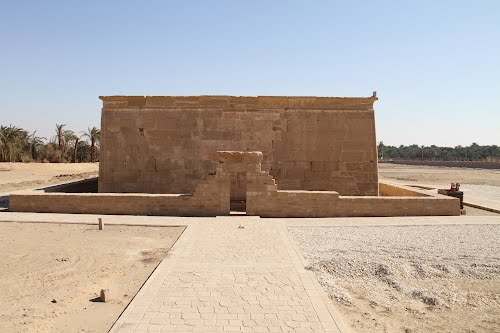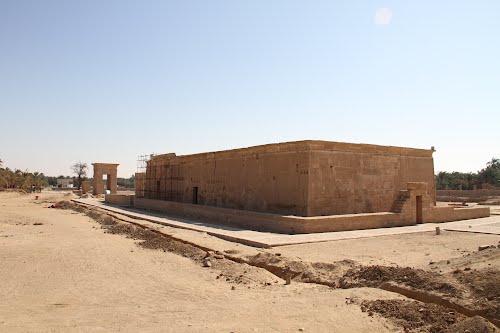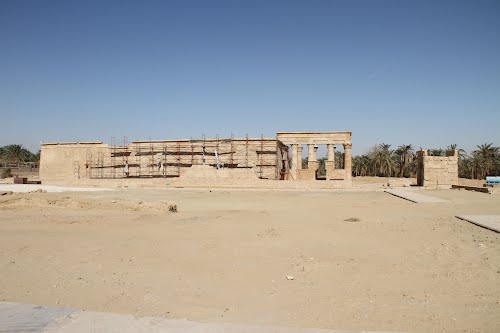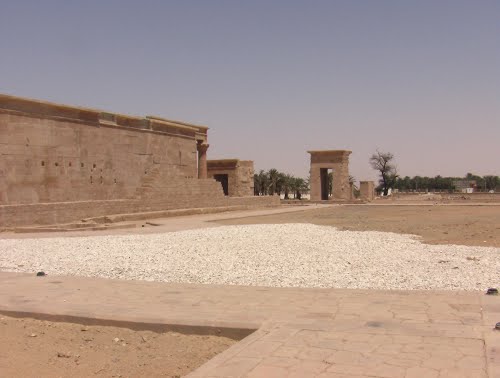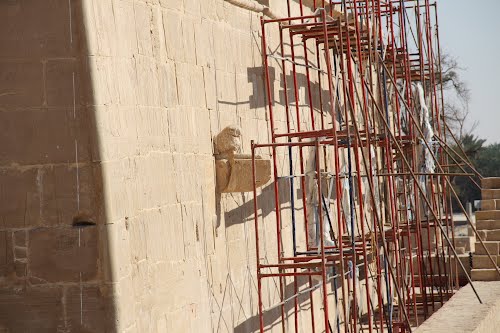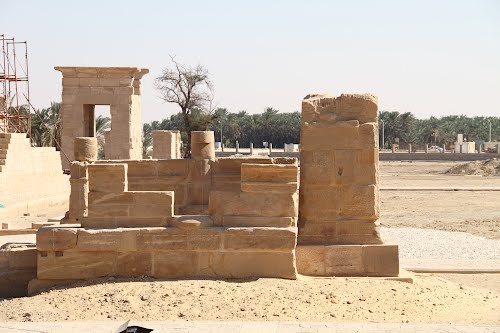The Temple of Hibis (Egyptian: Hebet meaning the plough), Persian - c. 6th century BCE, is the largest and most well preserved temple in the Kharga Oasis. Excavations were started out early during the 20th century. Hibis is the finest example of a Persian Period temple in Egypt. Its reliefs are very well preserved, owing to its burial in sand for many centuries. The temple contains a rich religious iconography and a wealth of theological texts in a very unusual style, perhaps the influence of a local style of art which until recent years has barely been studied. One large and unique wall-relief depicts a winged figure of Seth, god of the desert oases, with the head of a falcon. He is painted blue, a colour usually reserved for air deities and is fighting the serpent Apophis. Many deities are represented in the sanctuary and Min, another desert god, was also venerated here.
At Kharga Oasis, the temple at Hibis remains the only witness to the scope and nature of the building activities during the Late Period, before the start of the Ptolemaic Period. Construction at Hibis may have begun in the 26th Dynasty, but the temple was primarily built during the succeeding (27th) dynasty and decorated mostly by Darius and completed during the rule of the 30th-Dynasty king Nectanebo II.

